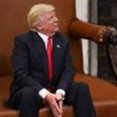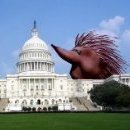Conditions At Temples In Bangkok
-
Recently Browsing 0 members
- No registered users viewing this page.
-
Topics
-
-
Popular Contributors
-
-
Latest posts...
-
0
Crime Man High on Drugs Fatally Stabs Relative, Flees to Rooftop in Phrae Province
Picture courtesy of Workpoint. A drug-intoxicated man fatally stabbed his 62-year-old relative in a frenzied attack before climbing onto the roof of his house to evade arrest, sparking a tense five-hour standoff with police and rescue workers in Phrae province. The incident occurred on the afternoon of 20 July in Ban Pa Phueng, Moo 11, Hua Fai subdistrict, Sung Men district. Police were alerted by local residents after a violent assault with a knife left one man seriously injured at the entrance of his home. Investigating officer Pol. Capt. Chatsi Yam Jamrattanasophin of Sung Men Police Station coordinated with municipal emergency responders, who arrived at the scene to find Mr. Det, aged 62, lying in a pool of blood at his front door. He had sustained seven stab wounds to his left rib cage, abdomen and chest. Despite attempts to revive him, he was later pronounced dead at Sung Men Hospital. The suspected assailant, identified as Mr. Natthawat 36, is the victim’s nephew. Blood trails found inside the house and leading to the front yard suggested the stabbing took place indoors before Mr. Det managed to stagger outside and collapse. Mr. Natthawat had climbed onto the roof of the same house. He was seen shirtless, wearing only shorts and clutching a knife. Officers from the Sung Men Police Station, supported by local officials and relatives, spent over five hours attempting to persuade him to surrender peacefully. Deputy Superintendent Pol. Lt. Col. Manop Jai-un led the negotiations, with assistance from family members familiar to the suspect. According to his mother, Mrs. Salunee, 65, Mr. Natthawat had previously undergone drug rehabilitation after experiencing hallucinations from substance abuse. She stated that he lived in the house with his wife and two children, a son and daughter and had been stable in recent months with no prior violent episodes. She expressed deep sorrow and left the matter in the hands of the police. Authorities are expected to press serious criminal charges once the investigation is completed. Adapted by Asean Now from Workpoint 2025-07-21 -
317
Report Fed-Up Nottingham Dad Moves Family to Thailand for New Life
.......with a Mansfield accent..... -
82
Civil war in Europe?
Some people prefer not to see reality. https://www.facebook.com/reel/596303240149608?fs=e&fs=e -
10
THAILAND LIVE Thailand Live Monday 21 July 2025
Man Killed Instantly as Pickup Crashes into Power Pole in Chonburi Pictures courtesy of Khaosod. A 29-year-old man was killed in a horrific crash in the early hours of morning when his modified pickup truck lost control and slammed into a power pole, causing the engine to detach and be flung across the road. Full story:https://aseannow.com/topic/1367310-man-killed-instantly-as-pickup-crashes-into-power-pole-in-chonburi/ -
0
Report Germany Fireworks Horror: 19 Injured at Düsseldorf’s Rheinkirmes Fair
Picture courtesy of AP A fireworks display turned into chaos at Düsseldorf's Rheinkirmes fair, injuring at least 19 people, including a child. Late Friday, fireworks unexpectedly exploded near ground level along the scenic Rhine river, causing panic among attendees. Fire squad and emergency services swiftly arrived at the scene to manage the aftermath of the unexpected incident. Four individuals sustained serious injuries, necessitating urgent medical attention. Düsseldorf police have launched an investigation to determine the cause of the mishap. The annual Rheinkirmes attracts thousands of visitors, making the incident an alarming highlight of this year's festivities. Eyewitnesses reported hearing sudden blasts, and images from the scene showed fireworks igniting uncomfortably close to bystanders. Event organisers are cooperating with authorities to ensure a thorough enquiry. Safety concerns have risen among local residents and tourists following the freak accident. The fair continued, although heightened security measures were implemented to emphasise visitor safety during the ongoing investigations. The police are gathering testimonies and reviewing video footage to piece together the sequence of events. Despite the chaos, attendees praised the swift response of emergency personnel, highlighting their crucial role in averting a potential catastrophe. The injured were transported to nearby hospitals, with updates on their condition eagerly awaited by concerned loved ones. Rheinkirmes, which is renowned for its vibrant atmosphere and attractions, suffered an unprecedented disruption. Authorities are keen to reassure the public about the fair's safety, even as investigations proceed to ensure no repeat incidents occur. WWith heightened scrutiny on future firework displays, the organisers are facing challenges in restoring visitor confidence. As Düsseldorf grapples with the incident’s aftermath, officials underscore the importance of stringent safety measures to protect revellers at large-scale events. Adapted by ASEAN Now from NBC News 2025-07-21 -
0
Middle East Syria in Crisis: Deadly Sectarian Clashes Threaten Stability
video screenshot Sectarian violence has erupted in southern Syria despite an immediate ceasefire declared by interim President Ahmed al-Sharaa. Druze fighters reportedly expelled Bedouin gunmen from Suweida on Saturday, though fighting persists elsewhere, casting doubt on the ceasefire's effectiveness. Unverified reports suggest government forces are involved in attacks on the Druze, with more than 900 fatalities in the past week. US Secretary of State, Marco Rubio, condemned the violence, urging Damascus to halt the atrocities. He highlighted the need for authorities to prevent ISIS and other extremist groups from exploiting the chaos. Rubio called for justice against those responsible for war crimes, including any within the government's ranks. The situation escalated as Israel, supporting the Druze, launched strikes on government targets in Damascus. The ceasefire agreement, part of a US-brokered pact, involves halting Israeli military actions if Druze civilians remain protected. Despite this, reports of ongoing gunfire and looting surfaced in Suweida. Israel's foreign minister expressed scepticism about the Syrian government's commitment to defending minorities. Suweida’s Druze community, with its unique faith derived from Shia Islam, is wary of Damascus, exacerbating tensions. Israeli Prime Minister Benjamin Netanyahu pledged to shield the Druze due to their connections with Israeli citizens. The conflict stems from long-standing tensions between Druze and Bedouin tribes, ignited by the abduction of a Druze merchant. The UK-based Syrian Observatory of Human Rights (SOHR) reports 940 deaths since last Sunday. UN human rights chief Volker Türk expressed concern over credible reports of widespread violations, including arbitrary killings. Türk emphasised the need for accountability among all parties involved, including the government forces and local armed elements. In response, the Syrian leadership vowed to protect all minorities and ensure those responsible for violations face justice. As violence spreads across Syria, the ceasefire remains fragile, with international intervention struggling to restore peace. The conflict underscores the complex dynamics of sectarian tensions in the region, posing challenges for both Syrian and international stakeholders seeking stability. Adapted by ASEAN Now from BBC 2025-07-21
-
-
Popular in The Pub



.thumb.jpeg.d2d19a66404642fd9ff62d6262fd153e.jpeg)







Recommended Posts
Create an account or sign in to comment
You need to be a member in order to leave a comment
Create an account
Sign up for a new account in our community. It's easy!
Register a new accountSign in
Already have an account? Sign in here.
Sign In Now